In May 2009 I was fortunate to visit for the third time São Paulo, the second largest megacity in the World, with a population just behind that of Mexico City. Reminders of Mexico City were present in the rather over-elaborate swine flu precautions adopted at the airport but fortunately nowhere else in the city. The population of Sáo Paulo City is 7-10 million but the urban agglomeration reaches 27-30 million people. Sáo Paulo has Brazil's largest hospital with almost 3,000 beds and the city generates 100 tonnes per day (tpd) of healthcare waste. This is treated in a type of micro-wave facility (electro-thermal-deactivation), which sterilises the waste so that it can be sent to landfill safely.
The city has 5.5m vehicles and it seems that almost all of them are on the move most of time. The majority of vehicles are capable of using ethanol or conventional fuel because after the first oil crisis Brazil decided to utilise its vast sugar cane potential area to provide ethanol as its main transport fuel. However, its ethanol capacity is now second to the USA after that country's effort to reduce dependence on overseas oil sources. Brazil is also fortunate in having hydro-power as its main source of electricity but that makes the economic justification for using landfill gas for the generation of electrical power difficult to justify.
The International Solid Waste Association (ISWA) Board meeting was held in São Paulo to provide support for the ISWA/ALBREPE Beacon Congress on Recycling but there was also the possibility to visit the main landfill site serving the city as well as examining issues of waste management generally. In 2004 São Paulo entered into two parallel 25-year contracts for the provision of MSW waste management collection, recovery, composting and treatment facilities. While the contracts allow for development of more sophisticated waste treatment, to date only 2% is being recycled through these contracts and an estimated further 5% through the efforts of the “catadores” picking up recyclable wastes from the street before the official collectors can collect it for disposal to landfill.
The contracts for the collection of the waste and its subsequent treatment are the responsibility of the City's Mayor, who has wider waste management powers than his London equivalent, Boris Johnson. The main waste function still retained by the 27 administrative districts is street cleansing.
In total São Paulo generates an estimated 12,000 tpd of MSW for disposal. Half of that is taken to 3 transfer stations serving the 27 districts and thence to the Caieiras landfill site. Of the remainder 1,000 tpd goes to the municipality owned but privately operated Sao Joao landfill and the remainder to the CDR Pedreira landfill operated by the Estre company. In addition, there is a construction and demolition waste site in the south of the urban agglomeration and two landfills handling industrial and commercial waste in the north.
Essensis CTR Caieiras Landfill Site
To get to the main landfill facility serving São Paulo means a 33km journey out to the north west of the city on a dual four-lane highway passing the former main landfill site a few kilometres south from the new site and clearly visible from the highway. The old landfill started to accept waste in 1978, covered an area of 1.2km2 and was eventually closed in 2005 after taking in 23 million tonnes of MSW. When I visited the site in 2003 the landfill gas was being burned through dozens of crude flares at the tops of the concrete caissons sunk deep into the waste.
The site was closed in 2005 but it was only in 2006 that a gas recovery system and electricity generating capacity was installed and is now generating 22MW of electricity. The project was funded through clean development mechanism (CDM) credits which are being sold to the developed economies that have signed up to the Kyoto Protocol in order that they can offset their CO2 emissions.
The City authorities therefore wanted the replacement landfill to be positioned so that it is away from public view. After starting the permitting process in 1991 eventually the site was opened to receive waste in September 2002. The most complicated and expensive civil engineering aspect was the cutting of the road connection through the mountain from the highway to the landfill site. The mountain thus effectively shields the site from public view. To date the equivalent of €30m has been spent on the site.
The site covers 350ha, of which the 150ha around the whole site had to preserved or to be planted with native species to shield the site from public view and also to ensure protection of the natural environment. The site therefore has a plant nursery to provide the necessary trees and shrubs to plant out in this area and also to replace the eucalyptus trees which had been previously planted in part of the area. This means that the site to be used for landfill of MSW is limited to the remaining 200ha and this provides a landfill capacity of 60m tonnes.
The nearest settlement is to the south of the site and special attention has been given to try to shield the site from the view of the population but this will be difficult given the hilly nature of the settlement so that some of the site will always be visible. The area is poor and often fences have been cut through to provide grazing for animals or to crop fodder for those animals. The fence may have to be replaced by a wall.
The landfill site is managed on a 50:50 joint venture basis by Essensis which was formed between two Brazilian companies Cavo and Solví. Solví was owned by the French company Suez but has recently been sold back to Brazilian interests
MSW landfill site
The MSW landfill was opened in September 2002. To date the site has accepted over 7 million tonnes of MSW. Half of the 7,000 tpd deposited at the site comes from Sáo Paulo and the other half from neighbouring communities. The waste comes in bulk vehicles from the 4 transfer stations in São Paulo but otherwise is mainly delivered directly by refuse collection vehicles and some skip vehicles.
The site is triple lined with PEAD, geomembrane, betonite, geocomposite and geotextile layers protected by a permeable gravel layer to ensure free movement of leachate and gas. The site geology is mainly sandstone with some limestone layers and at present having stripped the surface layers prior to engineering the base and sides of the site there is a surplus of sand. This is stored but often used directly for daily and intermediate cover.
The working face is deliberately kept as small as practically possible in order to minimise the environmental impacts of the landfill process. Waste is deposited both at the top of the face and at the bottom depending of the size of the vehicle, with the bulk vehicles from São Paulo being directed to the top and skip vehicles to the bottom, for example. The waste is moved by bulldozer and covered as soon as the appropriate depth of waste has been achieved. The use of waste compactors has deliberately been avoided because the site manager, Luzia Galdeano thinks that they cause problems in this type of deep site by stopping the free flow of gas and leachate through the waste. The waste will actually compact itself over time as successive layers are deposited over the next 20 years.
The rapid progress in filling the working face therefore limits the possibility of odour and there are no birds scavenging from the waste. Odour is very occasionally an issue with the villagers to the south but only at times of extremely high temperatures and when the wind blows in their direction. Fortunately the predominant wind direction is away from the settlement.
Hazardous waste treatment cell
The hazardous waste cell within the site had an initial capacity of 600,000 tonnes and started to accept hazardous waste in October 2005. However, to date it has received some 100,000 tonnes of hazardous waste and therefore proportionately is filling faster than the main landfill. The gate fee is around €70-80 per compared to the MSW landfill cost of €15-20 per tonne.
The hazardous waste cell accepts special toxic wastes. Combustible, reactive and pathogenic wastes are not accepted The wastes are progressively deposited in the site under cover. The cover can be moved as the covered area is progressively filled to the top of each 6m lift. The leachate from the hazardous waste cell is less problematic than the leachate from the MSW site, having a neutral Ph7 and lower BOD and COD levels.
Soil treatment plant
The soil treatment facility is located halfway up the slope between the main administrative and laboratory complex and the hazardous waste landfill. The facility is used to thermally treat soils contaminated with hydrocarbons. It has a capacity of 25 tonnes per hour and in 2008 treated 70,000 tonnes of contaminated soils. The decontaminated soils are used for intermediate cover on the landfill site.
Landfill gas extraction and flaring
Throughout the MSW landfill site there are gas extraction wells all linked up by pipeline to the bio-gas treatment plant. At present the 10,000m3 per hour of gas is being flared through two large gas flares. The only productive use of the gas is for two small generating units of 340kW and 250kW capacity, the output of which is mainly used to pump the gas to the plant and other operations at the plant. Even doing this flaring provides a huge amount of CDM credits, 2.8m tonnes CO2 until 2012 valued at $5.00 per tonne of CO2 equivalent when sold in 2006.
However, the site operator is keen to extract even more value from the biogas and even more CDM credits by utilising the gas for power production. Subject to a satisfactory negotiation with the UN over the CDM credits the site could be generating 12MW in 2011 and 40MW after 2020.
Leachate treatment
The rainfall at the site averages 1,500mm a year, falling mainly in the summer months of November to March. The leachate is therefore a mixture of 90% fresh water and only 10% comes from the waste itself.
At present there is no treatment of leachate on the site but there is a site allocated and plans to develop facilities in the next year. Therefore at present the 1000m3 day of leachate that is generated goes by tanker to the neighbouring municipal sewage treatment plant. In return the site accepts sewage sludge into the MSW landfill where it is spread out across the MSW and then covered with soil.
The plant's scientists and management are examining 4 different methods for treating the leachate, including options to extract the ammonia for fertiliser either as a solid product or as a liquid bio-fertiliser depending on which method is to be used. In turn this is dependent on the cost of processing and the acid used, hydrochloric or sulphuric respectively.
Therefore there is a considerable volume of fresh water to handle within the site and wherever possible this is kept away from the waste to be used for damping down the site roads leading to the active tipping face, for example.
Worker conditions
There is a total of more than 200 workers on the site including the 10 people engaged on scientific and analytical work. The site is securely guarded by armed security personnel, not to protect themselves against possible incursion by catadores but to ensure that unauthorised use of the site for other purposes, from criminal activity, for example, is prevented.
The ISWA group joined the workers for lunch in their canteen. In the 1980s the Government introduced PAT, the Worker Feeding Programme, which lays down that employers must provide a meal for their workers or provide lunch tickets. The site's lunch offering was a choice of green and/or mixed salads, rice and beans with two different meats, including beef, and cuzcuz, a mixture of vegetables bound into a solid matrix with mashed corn – a dish that derives from the slave history of Brazil – and fresh fruit.
As with all Brazilians there was an enthusiastic following of football, on television in the canteen, and a five-a-side facility at the site, although the prowess of the local team was not rated highly by the plant manager.
The ISWA group of 7 was just one of many who have visited the site. Each month 300 people are shown around the site. Our host for the visit was the site manager, Luzia Galdeano and the visit organised by Carlos Silva Filho of ABRELPE, the Brazilian national member of ISWA.





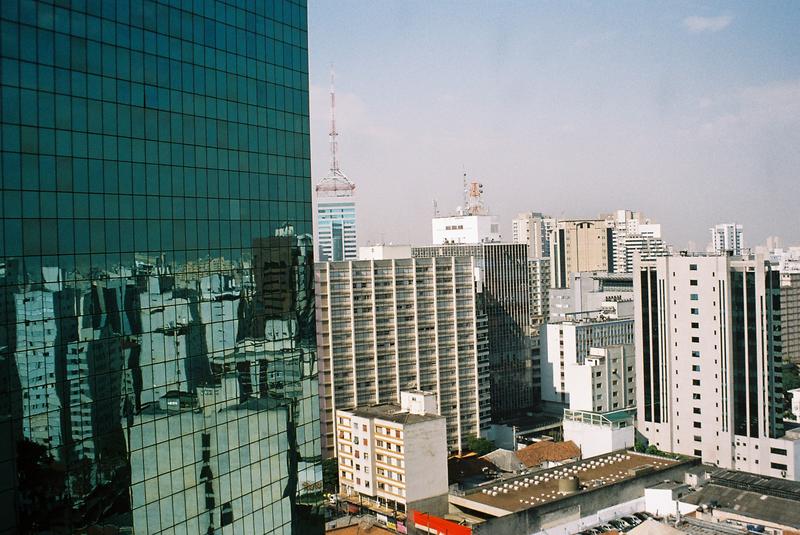
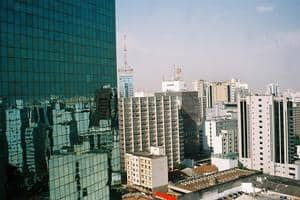
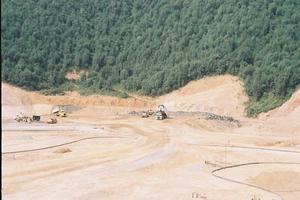
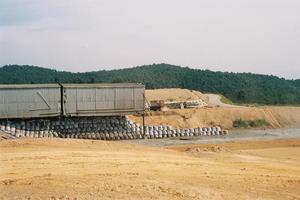
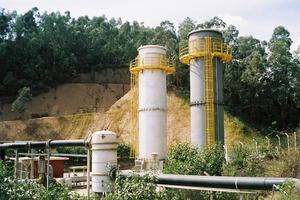
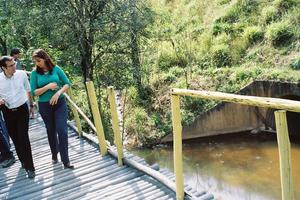



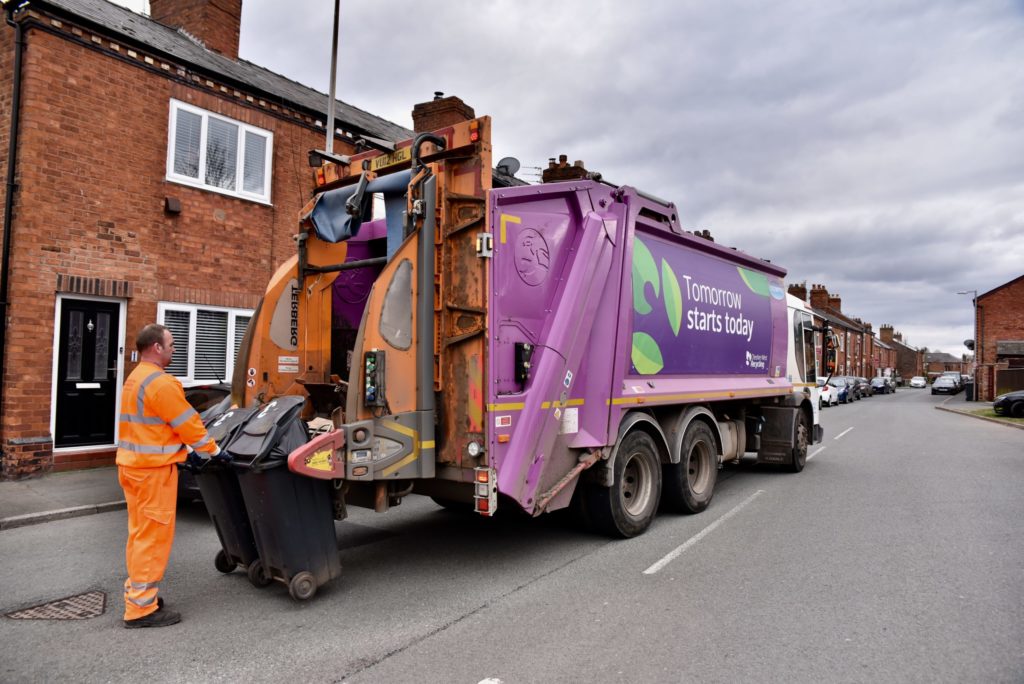

Subscribe for free